Rarely does one remember but one of the things that Spain is famous for is contributing to the discovery of the Americas. In the late 1400s, Christopher Columbus, a great marine navigator led a voyage across the globe only to discover the Americas with the support of the then King of Spain, Ferdinand II. Whether Columbus was a Spaniard or not and if he was the first person to discover the Americas is debatable today according to historians.
Jokes aside, Spain, Europe’s fourth largest country, boasts of a rich historical and cultural past that had dominated the European peninsula for hundreds of years. Today, Spain is famous for hundreds of historical places that stand out as iconic landmarks in Spain as well as in the world.
Amid a multitude of famous Spanish monuments, you are transported back to the golden days of yore. Here, time stands still and you are left in awe of the multitude of monuments Spain is famous for and which have stood the test of time and today stands as a legacy to its rich and diversified history and culture.
Today, despite its massive urbanization in the last few decades, there are monuments in Spain that have enthralled visitors for decades. Spain has something to offer to everyone – Rich arts and culture, beautiful churches and monuments, beautiful beaches, mountains and plains, islands and rivers, amazing palaces and forts, scenic flora and fauna, and adventure sports. And for the extremely brave hearts,
there is always the bull run that can boost up your adrenaline. For fun-and-frolic-loving people, you can always opt for the world-famous Tomatina Festival. No wonder, visitors continue to flock to this country because of its Spanish monuments and its iconic landmarks.
So, let’s highlight some of the most amazing landmarks in Spain that are a must on your itinerary when you visit the country.
Here is the list of Top 12 Iconic landmarks to Visit in Spain:
- The Historic City of Toledo
- La Sagrada Familia and Gaudi Architecture in Barcelona
- The Royal Palace in Madrid
- Hola Camp Vendrell
- The Mosque-Cathedral of Cordoba
- Alcazar Fortress (Segovia)
- Plaza de España
- Parc Guell
- Tibidabo Cathedral
- San Lorenzo De El Escorial
- Palma Cathedral
- El Torcal de Antequera
Table of Contents
Iconic landmarks to Visit in Spain
The Historic City of Toledo
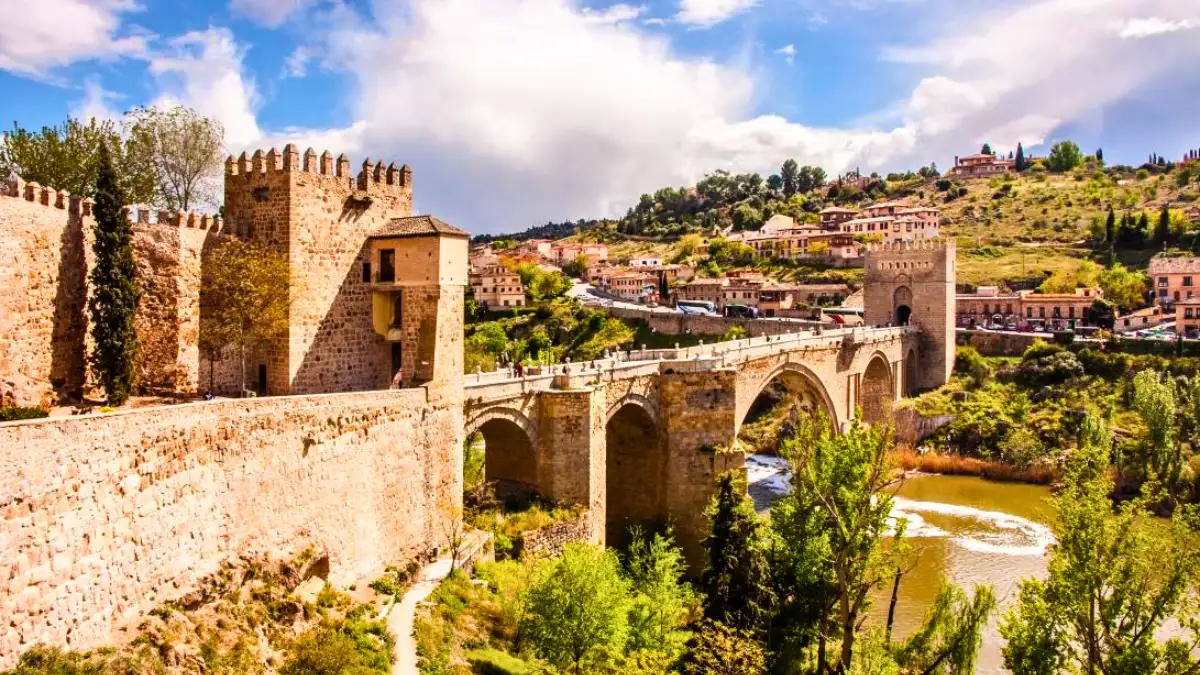
The city of Toledo is situated centrally in Spain and boasts of a rich cultural and historical past and has been listed as a UNESCO World Heritage Site since the 1980s. With its mix of Christian, Jewish, and Islamic culture which stands out even today, Spain’s architectural landmarks are a testimony to its rich and diversified history.
The historic Toledo Cathedral is one of the most famous Spanish monuments in Spain and stands as a testimony to the influence of Gothic architecture. It houses some of the most amazing artworks in the world that are a must-see for visitors to Spain.
The Alcazar of Toledo, a fortress standing on the highest point in the city is one of the iconic landmarks in Spain, giving you a glimpse of the city below. This monument has stood tall for centuries bearing testimony to the might of the ancient Spanish military. Today, it houses a Military Museum which is one of the historical things Spain is famous for. The city also boasts numerous centuries-old synagogues. In short,
Toledo is not just a city but a living and breathing museum with a story to tell wherever you go. Its mediaeval and gothic architecture, quaint little lanes, diversified culture, and religious co-existence are a testimony of what the city has been and continues to be for the visitors.
La Sagrada Familia and Gaudi Architecture in Barcelona
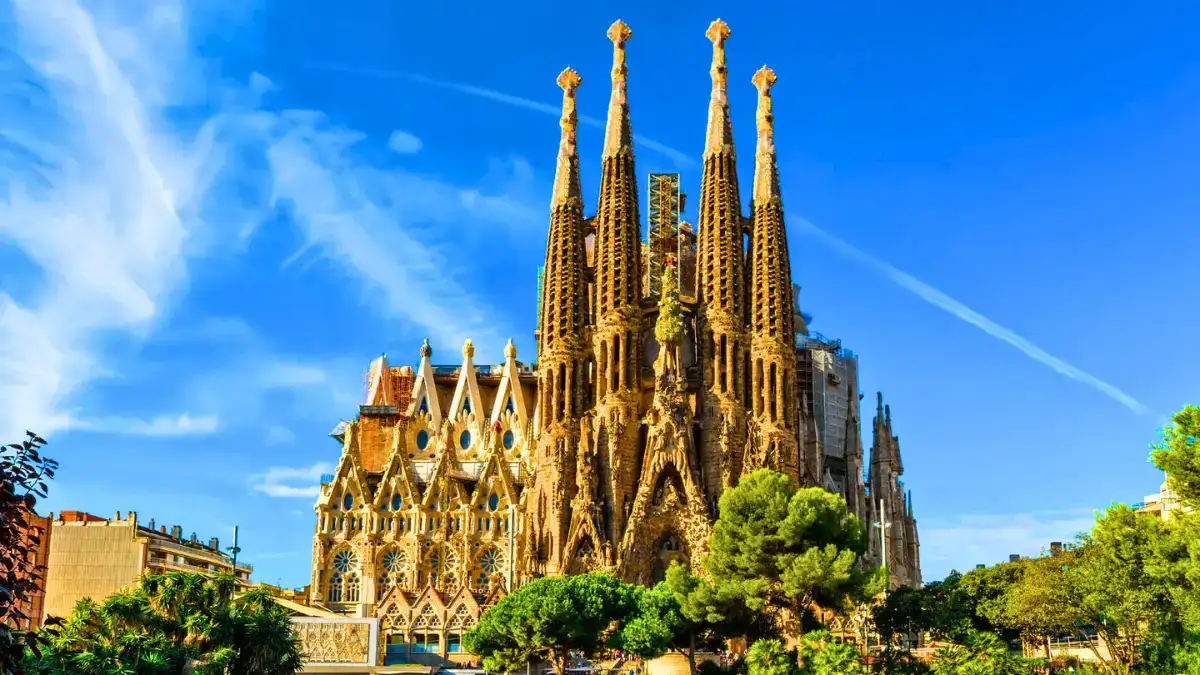
Barcelona has much more to offer other than its world-famous football club. What sets Barcelona apart other than its football club and its high number of Michelin-starred restaurants, is the fact that Barcelona is home to La Sagrada Familia, one of the most famous Spanish monuments in Spain that’s also home to 9 other UNESCO World Heritage Sites.
It is intriguing to note that the architectural wonder of La Sagrada Familia is, it is one of the most famous Roman Catholic Churches across the globe and one of the most famous landmarks in Spain. Construction of this church started in 1882 under the guidance of master architect Gaudi and will be completed by 2026 after 144 years! Its grandeur, intricate designs, and mammoth size are a testimony to the fact what an artist Gaudi was when he recreated the design of La Sagrada Familia to come up with La Sagrada Familia as is seen today.
History states that when Gaudi passed away in 1926, only 25% of the church was built. Over the years, other architects took turns to continue to shape Gaudi’s vision for La Sagrada Familia. Today, the magnificent church holds the tag of UNESCO World Heritage Site and has also been announced as a Basilica by the Pope in 2010. A visit to La Sagrada Familia is a must for those who love history, culture, and architecture that is a mix of Gothic and Curvilinear Art Nouveau forms. In its 144 years of construction,
work had halted at the site only twice – during the Spanish Civil War in the early 19th century and the second time, during the COVID pandemic in 2020. The interiors of La Sagrada Familia feature towering columns designed to resemble trees, and stained glass windows that add to the allure, throwing in superb rays of light that enhance the spiritual effects of the church.
Today, the colossal church is a fine example of mediaeval and modern architecture and is a testimony to Gaudi’s unparalleled vision, creativity, and architectural gift. This church is worth visiting irrespective of one’s religious leanings. Despite still another couple of years to completion, La Sagrada Familia continues to captivate and inspire visitors from all across the world.
The Royal Palace in Madrid
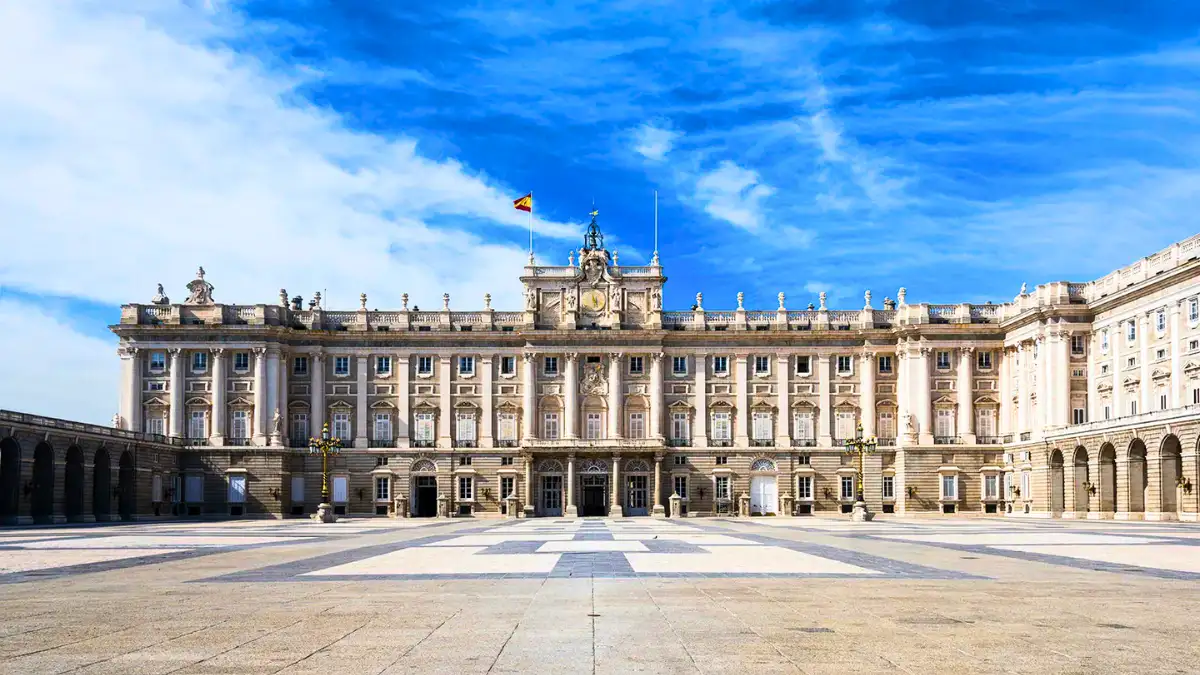
Located in the heart of the capital city of Spain, Palacio Real de Madrid better known as The Royal Palace of Madrid is a colossal testimony to its opulent architecture, lavish interiors, its art collection, and cultural heritage. Today, The Royal Palace is one of the iconic landmarks in Spain. Today, it’s used for official state ceremonies and other functions. The Royal Palace built in the 18th century is known for its grand staircase among other things.
The staircase leads to various rooms that house amazing historical artefacts, frescoes, and intricately designed interiors. Some of the rooms showcase beautiful tapestries and furnishings, furniture, and silverware that have survived the test of time. For nature, arts, and history buffs, The Royal Palace is a sight to behold.
From its beautiful gardens to the intricately and beautifully crafted rooms inside the palace that also houses various museums dedicated to arts, armoury, and other historical things, the palace stands as a testimony of the glorious past of Spain’s royal heritage that stands tall even today captivating and inspiring millions of visitors to the site year after year.
Also Read: Hill Stations to Visit in Europe
Hola Camp Vendrell
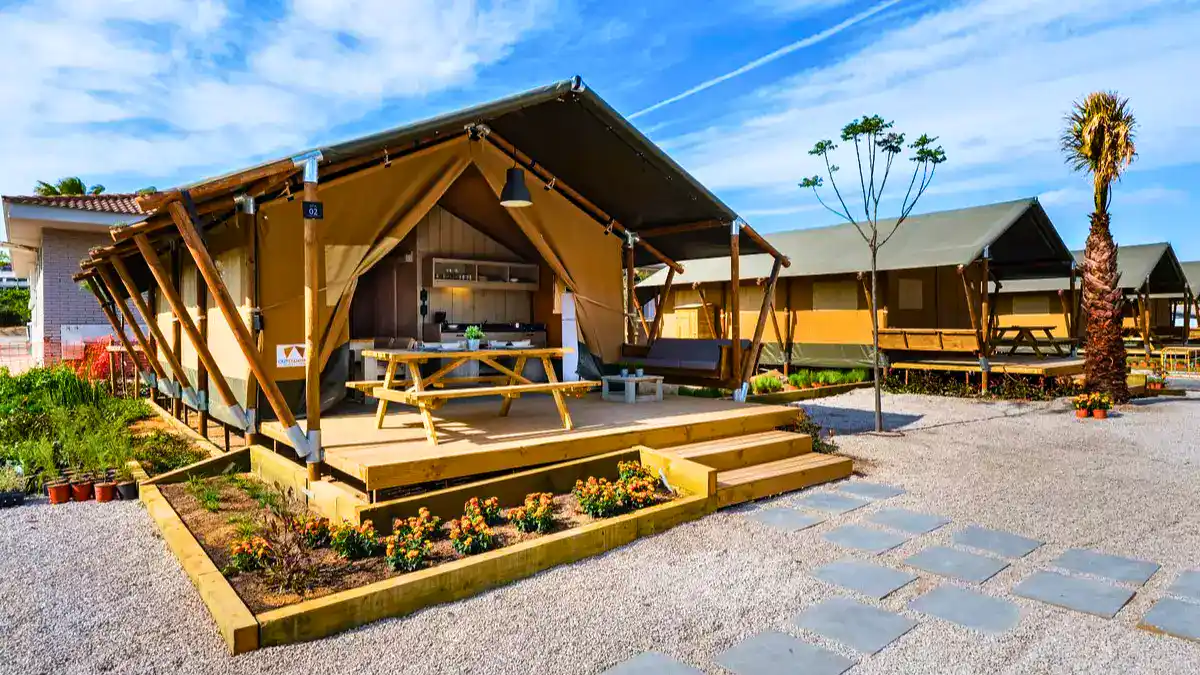
Located in the Catalonia region, Hola Camp Vendrell is a famous and popular camping destination located in the town of EL Vendrell known for its beaches, gothic architecture, beautiful landscapes, and rich cultural heritage. Hola Camp Vendrell has something to offer to everyone and is listed as one of the iconic landmarks in Spain. If you are a solo traveller, or with family or a group of friends, Hola Camp offers a comprehensive camping experience tailor-made for you that is a blend of outdoor activities and modern lifestyles including stay.
Easily accessible by public transport i.e. road or rail, the town is an ideal place to visit for both local dwellers and tourists alike. One can camp out in the open in a tent, book a room in an eco-friendly lodge, or hire a modern camper that has all the modern amenities like a kitchen, bathroom, etc., and can be parked on the vast camping ground. Hola Camp Vendrell also boasts sports amenities like football grounds and tennis courts, swimming pools, golf courses, etc.
For those inclined towards a more balanced gym lifestyle, you can opt for modern gyms or better, enroll for aerobics, or modern dance classes to enjoy the stay. Family outings also include indoor and outdoor activities for children including arts and crafts classes. For the culturally inclined, there are a lot of historical sites worth visiting around Hola Camp Vendrell. Overall, Hola Camp Vendrell provides a complete camping experience combined with its historical significance and natural beauty.
The Mosque-Cathedral of Cordoba
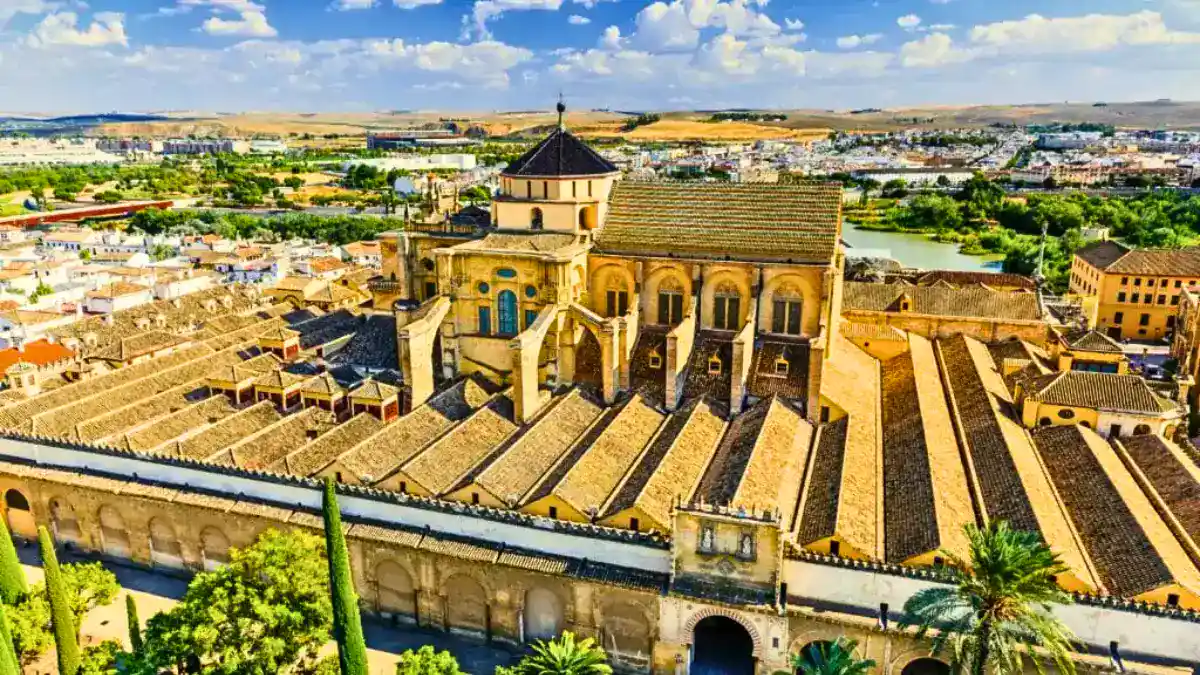
The Mosque–Cathedral of Cordoba simply known as Mezquita is one of the most remarkable architectural monuments that is a blend of Islamic and Christian cultures built over centuries ago and renovated time and again by the kings and other rulers over time. Today, the monument stands testimony to the country’s rich and diversified historical legacy and decades of religious and cultural transformation marking it as one of the most famous landmarks in Spain.
The origin of the cathedral began in the 8th century by an Islamic ruler who built a mosque at the site of a former church. For centuries, the mosque stood ground till King Ferdinand III captured Cordoba and consecrated the mosque as a Catholic Church and over the years, numerous rulers modified or added to the structure to reflect the Christian belief.
The most important aspect of the Mosque-Cathedral of Cordoba is the blend of Islamic and Catholic Church influence that is still prevailing today. It reflects the harmony and cultural and religious history of the country that has seen it all and yet accepted it with open arms. It’s a testimony to the city of Cordoba which has been a melting pot of religion, culture, and traditions for centuries.
Today, the Mosque-Cathedral of Cordoba is a UNESCO World Heritage Site and a major tourist attraction for its architectural wonder and historical significance drawing visitors from around the world even as it continues to function as a Catholic Church for the local community.
Alcazar Fortress (Segovia)

The Alcazar is a mediaeval castle and one of the most famous landmarks in Spain. It’s located in the city of Segovia and has been around since the early 13th century built by King Alfonso VIII. It is one of the oldest mediaeval castles and is famous the world over for its beauty, striking structure, and architectural features, making it one of the most prominent landmarks in Spain. Over centuries,
the castle has been the centre point for numerous historical events even as it served as a royal residence to kings and queens followed by turning into a museum and a military academy in the 18th century. Today, Alcazar stands as a colossal museum and a protected UNESCO World Heritage Site that sees millions of visitors every year.
Like the Royal Palace of Madrid, Alcazar also boasts of an impressive architectural marvel that is a blend of Gothic, Romanesque, and Renaissance periods making it stand out as one of the leading iconic landmarks in Spain. The interiors are equally impressive with its beautiful rooms, halls, and passages that have been intricately designed to reflect its royal heritage.
The King and Queen’s bedrooms are lavishly decorated with intricately designed tapestries, furniture, etc., and the work of prominent painters of the bygone eras adorn the walls of these rooms. A walk through the walls of the castle transports you into the world of kings and queens and their royal lifestyle.
If you are interested in mediaeval weapons, the Armoury is the place to visit inside Alcazar. This room houses weapons, armoury, military artefacts, and crucial military documents belonging to the mediaeval era thus underlining the importance of the castle’s history and significance to the modern world.
Also Read: Best Adventure Activities to do in Europe
Plaza de España
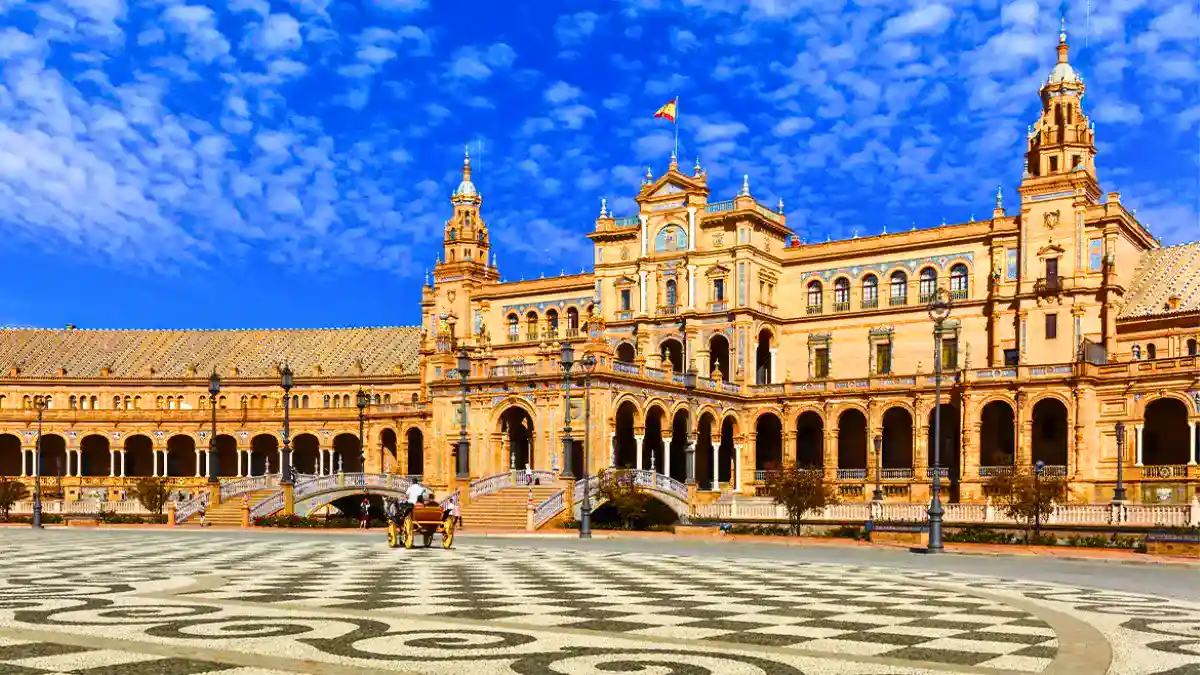
Built for the Ibero-American Exposition in the year 1929, Plaza de España today is one of the most visited and photographed modern landmarks in Seville, Spain visited by millions of tourists every year. Built over 14 years, this Spanish landmark was completed in time for the expo in 1929 and its architecture is a blend of the Renaissance period combined with modern elements reminiscent of the city’s rich historical and cultural heritage.
Today, the main building of the plaza houses government offices while the two major towers that flank the building add to the plaza’s grandeur and are visible from major points across the city.
One of the most distinctive features of the Plaza de España is its centrally located canal which can be crossed by four bridges that represent the four regions of ancient Spain – Leon, Castile, Navarre, and Aragon. The best part of the Plaza is visitors can rent rowboats to take in the sights the canal has to offer.
Plaza de España has featured in many feature films which makes it more interesting to visitors. Today, it’s not just a modern architectural wonder but its also a cultural, arts, and social hub where millions gather daily to enjoy its enriching and vibrant atmosphere and savour its charm and beauty.
Parc Guell
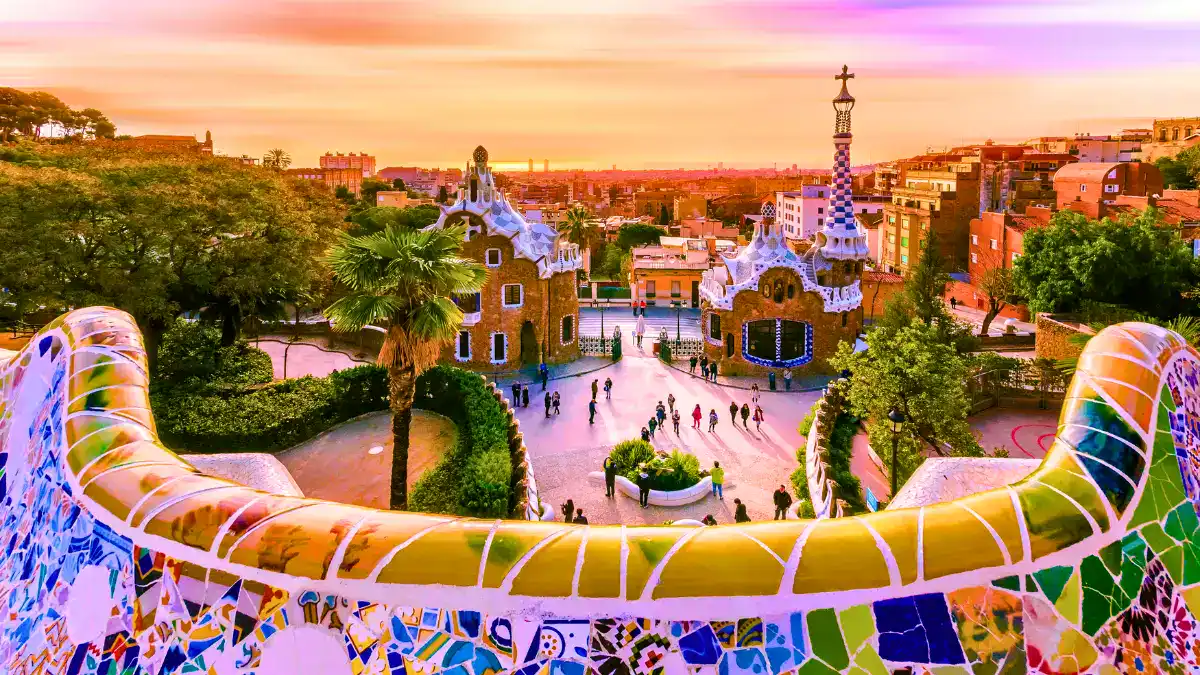
Located in Barcelona, Parc Guell as it calls out, is a park for everyone. This park is one of the largest green spaces in Barcelona spread across the city and credited to Gaudi, the famous architect who gave Spain La Sagrada Familia among other architectural wonders.
Today, the park has been recognized as a UNESCO World Heritage Site and pays homage to Gaudi’s unique style of mixing natural elements, vibrant colors, and intricate mosaic designs in its looks.
A visit to Parc Guell is nothing less than a visit to a fairyland. The entrance itself resembles two gingerbread houses that tell you what to expect as you venture inside. The park not only houses flora and fauna including amazing landscapes and fairy tale elements, but it also houses a museum dedicated to the life and works of Gaudi providing insight into the creative genius that Gaudi was and his personal life.
Thus, if you want to know more about the man Gaudi was, the testament to his creativity and his ability to mix elements of nature with arts and architecture, Parc Guell is the answer. Its unique design, innovative use of natural forms, and vibrant colors blending with fairytale-like elements make Parc Guell one of the most visited parks in the world, giving an inspiring and captivating glimpse into the life of Gaudi, a master architect.
Tibidabo Cathedral
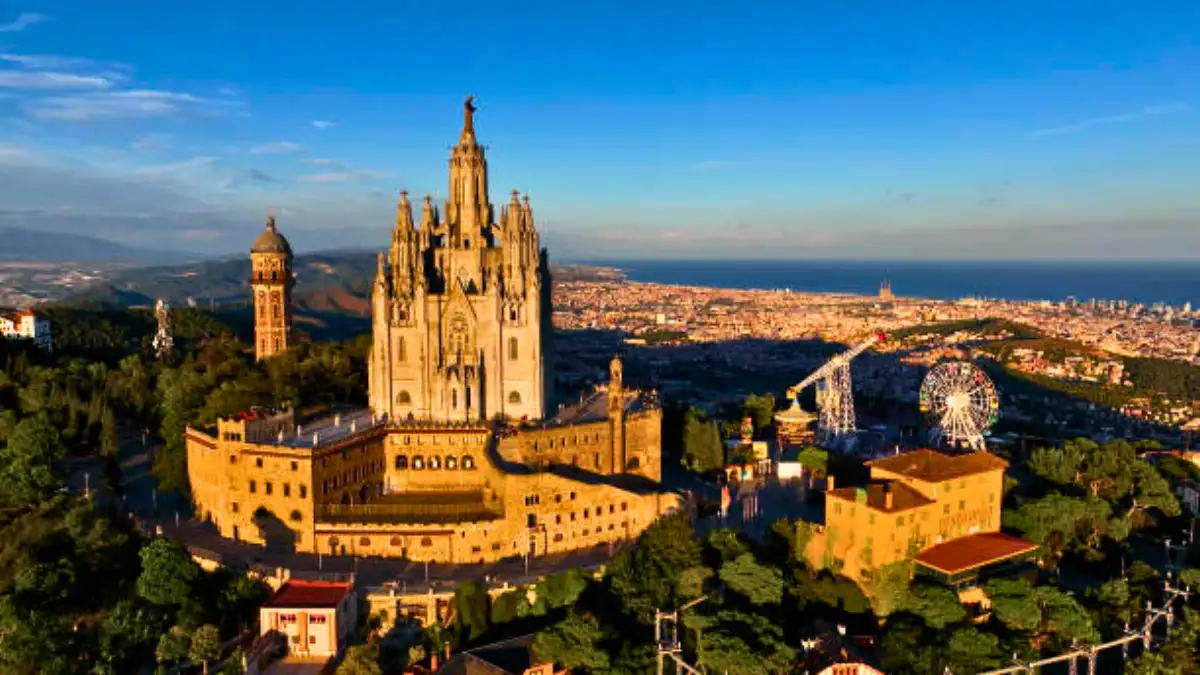
Tibidabo Cathedral is a Roman Catholic Church and minor Basilica located on the top of Mount Tibidabo in Barcelona. The construction of the church started in 1902 and lasted nearly 60 years. Its unique location offers visitors breathtaking views of the city, the mesmerising sea, and the enchanting countryside. This iconic and beautiful church is an exemplary blend of Gothic and modern architectural styles that is beautiful to behold.
Tibidabo Cathedral is an imposing structure and combined with the scenic views it offers including the structure’s intricate designs and persona, this is a must-visit landmark in the city for its religious context, beautiful sightseeing, and cultural offerings.
The travel up the mountain to Tibidabo Cathedral by road rail or tram is an adventure in itself as it offers a panoramic view of the countryside as you make your journey across the mountain.
One of the important aspects of the church is the enormous bronze statue of the Sacred Heart of Jesus adorning the top of the Church which is visible for miles.
Also Read: Honeymoon Destinations in Europe
San Lorenzo De El Escorial

San Lorenzo De El Escorial is a historical town located about 40 km from Madrid and which houses the residence of the King of Spain among other historical buildings and monuments that Spain is famous for. The most important building in San Lorenzo De El Escorial is the monastery which houses a huge library consisting of both modern and ancient books. The site was declared a UNESCO World Heritage Site in the early 1980s.
The earliest references to San Lorenzo De El Escorial date back to the 1500s when Philip II of Spain appointed a commission to look into a site for the monastery. Today, the monastery boasts millions of visitors each year. San Lorenzo De El Escorial today has an important historical-artistic, urban, and cultural heritage that makes it attractive for visitors from across the globe.
There are other key landmarks like the Seat of Philip II – where historically speaking the king would seat himself to overlook the construction of the monastery, Park of the Casita, and the Valley of the Fallen which are a must-visit place in San Lorenzo De El Escorial.
Palma Cathedral
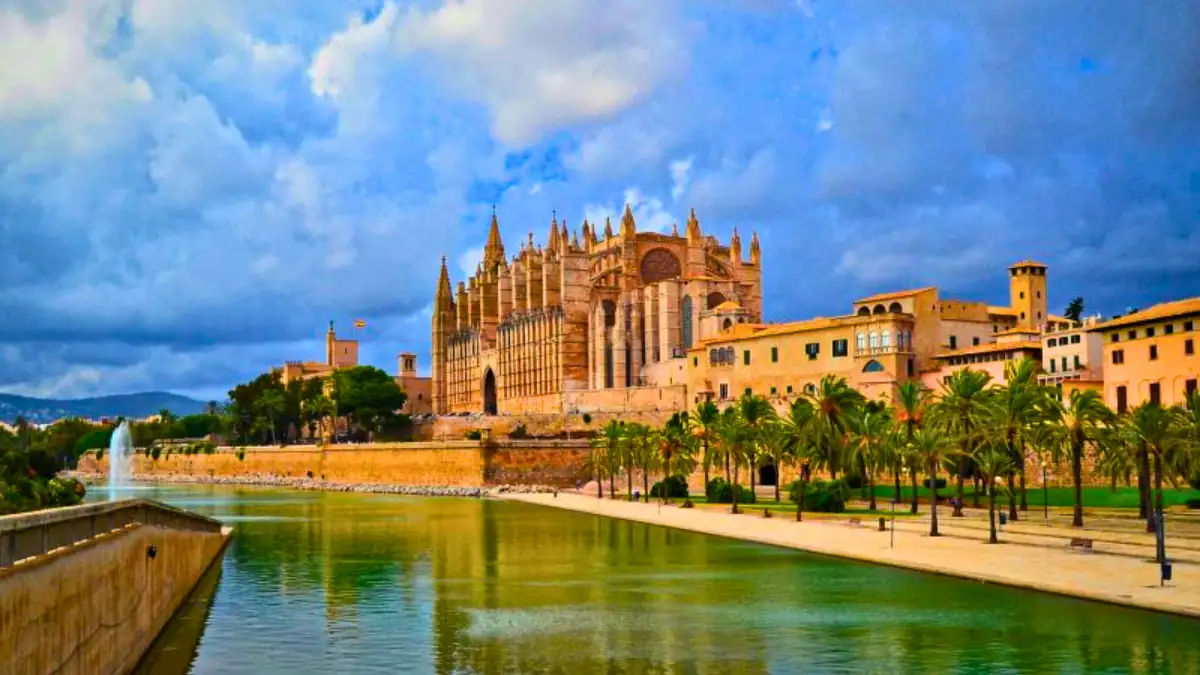
Palma Cathedral located in Mallorca is one of the most spectacular works of Gothic architecture in Spain. The construction of the cathedral began in 1229 and spanned several centuries with significant renovations and contributions to the structure over the years. Located by the sea, Palma Cathedral, this magnificent church with its pointed arches and large rose window called ‘Gothic Eye’ is one of the most impressive and intricately designed Gothic cathedrals in Europe and a symbol of Spain’s rich cultural and religious heritage.
The ‘Gothic Eye’ measuring 12 feet in diameter is one of the largest rose windows in the world and in the mornings as sunlight streams through it casts a mesmerising display of colours inside the cathedral.
The cathedral’s prominent seafront location and its historical and cultural significance make it a focal point of the city’s skyline and a major attraction for tourists year after year. The cathedral stands as a beacon of hope and faith for the people of Mallorca and the world at large.
El Torcal de Antequera

El Torcal de Antequera is a major natural park Spain is famous for and situated in the province of Malaga. It features stunning limestone formations, intricate rock patterns, and enchanting and breathtaking vistas that will blow your mind away. This site offers visitors an opportunity to explore a surreal landscape shaped by natural forces over millions of years.
Some of the prominent formations within the park are natural bridges, towers, cliffs, mushroom-shaped rocks, and towering stacks as if handmade. To add to these natural elements are bio-diversified flora and fauna (Wild Orchids, Torcal Oak, etc.) that have adapted themselves amazingly to the rocky terrains. In Fauna, birds, animals, and reptiles have taken to the park’s ecosystem and one can find several reptiles making homes in the rocky crevices and holes.
So whether you’re a hiker or a naturist, there is something for everyone. From hiking trails to vistas to enjoy, to birdwatching, El Torcal de Antequera has something to offer for the adventure seekers. The park also offers visitors a glimpse of human habitants from millions of years ago with evidence of ancient settlements and rock arts in natural rock shelters and caves in the park.
Also Read:: Best Places to Visit in Spain
Bottom line
In conclusion, Spain is a country with a rich historical and cultural background that Spain is famous for the world over. It’s dotted with multiple UNESCO World Heritage Sites that offer a glimpse of the vast Spanish history. Other than the historical places, religious churches and other landmarks that Spain is famous for,
it also celebrates festivals like the Bull Run and the Tomatina Festival (in Valencia) which is a huge draw with tourists. So whether you’re on a solo holiday or a trip with your family or group of friends, Spain is the country to visit now.
Check Latest Stories:

Book Europe Tour Package
Starting @ 199,999/- INR
3N Paris , 1N Amsterdam , 1N Cologne and 3N Zurich
Highlights
- To and Fro Economy Class Flights
- Stay in good 3/4 star hotels in Europe
- Unique offering – Stay in Amsterdam, Zurich City Tour and option to enjoy train experience in Switzerland
- Daily Continental Breakfast
- Covers the best sightseeing in Frankfurt, Switzerland. Netherlands and Paris
- 8 Indian Jain/Vegetarian/Non-Vegetarian Dinners
- All Transfers and Tours by Luxury AC Coach
- Schengen Visa Charges and Travel Insurance Included
- Guaranteed Schengen Visa Appointments
- Services of a English/Hindi Experienced Tour Manager
Frequently Asked Questions
What is Spain’s most famous landmark?
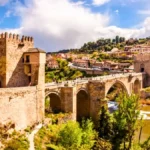
Toledo Cathedral because of the influence of Islamic, Jewish, and Christian architectural styles.
What is the most visited spot in Spain?
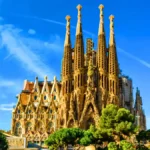
La Sagrada Familia Church with its 4.5 million visitors annually.
What is the oldest landmark in Spain?
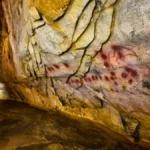
The oldest landmark in Spain is the El Castillo Cave located in Cantabria discovered in 1903.
How many landmarks are in Spain?
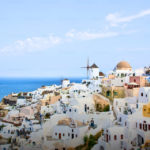
Spain has a multitude of landmarks including more than 45 UNESCO World Heritage Sites.
What is the most unique thing in Spain?

One of the most unique things in Spain is the Tomatina Festival during which millions of tourists flock to Valencia to partake in this tomato festival – supposed to be the biggest food fight in the world.




